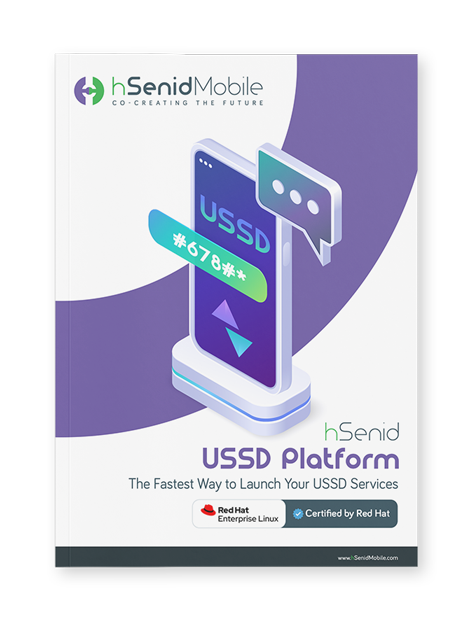In the ever-evolving landscape of mobile communications, the rise of 5G,
AI-powered apps, and data-rich services continues to reshape how users
interact with networks. Yet, amidst all this transformation, a decades-old
technology continues to dominate in emerging markets. Despite numerous
predictions of its demise, telecom operators are doubling down on this
reliable, real-time channel. A core reason for this sustained relevance lies
in the continued innovation around the USSD gateway, which has adapted to
support 4G and 5G environments, integrate with AI/ML, and provide an essential
bridge for inclusion in regions with limited internet penetration.
USSD (Unstructured Supplementary Service Data) remains the most widely used mobile communication protocol for services such as balance inquiries, mobile money, recharge, and customer self-care. While many expect smartphones and apps to take over entirely, the data tells a different story.
According to the GSMA, over 90% of mobile money transactions in Sub-Saharan Africa still go through USSD. In 2024, roughly eight percent of the population between 16 and 64 was using mobile payment services. These numbers highlight one fact: USSD is not just surviving—it’s thriving.
So, what’s keeping USSD relevant? A modern USSD gateway is no longer just a legacy bridge for 2G or 3G networks. It is now a robust, feature-rich layer capable of supporting multi-channel service delivery. Platforms like hSenid Mobile’s USSD Suite are 5G-compatible, powered by IMS architecture, and support both network-initiated and user-initiated USSD flows.
Some key features that make today’s USSD gateways mission-critical for operators include:
There are several reasons telcos continue to invest in and modernize their USSD infrastructure:
Modernization doesn’t mean abandoning legacy—it means upgrading it. For telcos looking to grow their subscriber base, retain customers, and offer intuitive digital experiences without alienating non-smartphone users, USSD remains a strategic asset. A reliable, scalable USSD is the cornerstone of this strategy, enabling telcos to blend the old with the new and reach customers across all demographics.
Moreover, with AI/ML enhancing service personalization and 5G support ensuring network compatibility, USSD is evolving—quietly but powerfully.
The question isn’t whether USSD is still relevant—it’s why so many operators still bet on it. And the answer lies in its unmatched reach, efficiency, and adaptability. Telcos that continue to modernize their USSD infrastructure with next-gen platforms like the hSenid USSD Suite are not clinging to the past; they’re building an inclusive, resilient future.
As emerging markets leapfrog into digital economies, and operators search for the most cost-effective way to scale services, USSD remains a safe bet. The USSD gateway—once a utility for 2G—is now a strategic driver of mobile innovation.
With its AI/ML-optimized menu design, 5G-ready architecture, and seamless third-party integrations, the hSenid USSD Suite empowers telcos to rapidly deploy, manage, and scale mobile services like never before.
The Unshakeable Dominance of USSD in Emerging Markets
USSD (Unstructured Supplementary Service Data) remains the most widely used mobile communication protocol for services such as balance inquiries, mobile money, recharge, and customer self-care. While many expect smartphones and apps to take over entirely, the data tells a different story.
According to the GSMA, over 90% of mobile money transactions in Sub-Saharan Africa still go through USSD. In 2024, roughly eight percent of the population between 16 and 64 was using mobile payment services. These numbers highlight one fact: USSD is not just surviving—it’s thriving.
How the USSD Gateway Powers Modernization
So, what’s keeping USSD relevant? A modern USSD gateway is no longer just a legacy bridge for 2G or 3G networks. It is now a robust, feature-rich layer capable of supporting multi-channel service delivery. Platforms like hSenid Mobile’s USSD Suite are 5G-compatible, powered by IMS architecture, and support both network-initiated and user-initiated USSD flows.
Some key features that make today’s USSD gateways mission-critical for operators include:
- Multi-network compatibility: Support for 2G/3G/4G/5G within a single application server eliminates compatibility concerns.
- Open APIs: Third-party apps can connect seamlessly to offer services, drastically reducing time-to-market.
- Session resuming & management: Prevents service drop-offs due to timeouts, improving UX, and boosting service continuity.
- Flexible charging mechanisms: Allow per-session or per-request billing to suit varied business models.
Why Telcos Aren’t Abandoning USSD Just Yet
There are several reasons telcos continue to invest in and modernize their USSD infrastructure:
- Universal Accessibility: USSD doesn’t require an internet connection, app downloads, or expensive smartphones. It works on any GSM phone and is instantly accessible. In developing regions, where smartphone penetration is still catching up, USSD is the most inclusive platform for digital service delivery.
- Cost-Effectiveness: Compared to app development and data-heavy services, USSD sessions are extremely affordable to deploy and operate. The elimination of SS7 card dependency, thanks to SIGTRAN-based solutions in modern USSD deployments, also reduces Total Cost of Ownership (TCO) significantly.
- Revenue-Generating Opportunities: From balance top-ups and promotions to VAS subscriptions and mobile banking, USSD is a proven revenue channel. Telcos can deploy marketing campaigns, surveys, and even run competitions through USSD, engaging millions at a fraction of the cost of digital channels.
- Integration with AI & ML: The latest USSD platforms now incorporate AI/ML to make menus smarter and more responsive. By analyzing user behavior, frequently accessed services can be bookmarked or suggested dynamically, simplifying navigation and enhancing customer satisfaction. This evolution helps telcos bridge the gap between basic USSD and intelligent, user-centric interfaces.
- 5G Compatibility: As 3G networks face decommissioning and operators shift towards 4G and 5G, modern USSD platforms are built with IMS and SIP integration, enabling them to run smoothly over high-speed networks without circuit-switched fallback. This future-proofs USSD investments and aligns with next-gen infrastructure goals.
The Strategic Role of USSD in Telco Transformation
Modernization doesn’t mean abandoning legacy—it means upgrading it. For telcos looking to grow their subscriber base, retain customers, and offer intuitive digital experiences without alienating non-smartphone users, USSD remains a strategic asset. A reliable, scalable USSD is the cornerstone of this strategy, enabling telcos to blend the old with the new and reach customers across all demographics.
Moreover, with AI/ML enhancing service personalization and 5G support ensuring network compatibility, USSD is evolving—quietly but powerfully.
Final Thoughts
The question isn’t whether USSD is still relevant—it’s why so many operators still bet on it. And the answer lies in its unmatched reach, efficiency, and adaptability. Telcos that continue to modernize their USSD infrastructure with next-gen platforms like the hSenid USSD Suite are not clinging to the past; they’re building an inclusive, resilient future.
As emerging markets leapfrog into digital economies, and operators search for the most cost-effective way to scale services, USSD remains a safe bet. The USSD gateway—once a utility for 2G—is now a strategic driver of mobile innovation.
With its AI/ML-optimized menu design, 5G-ready architecture, and seamless third-party integrations, the hSenid USSD Suite empowers telcos to rapidly deploy, manage, and scale mobile services like never before.








